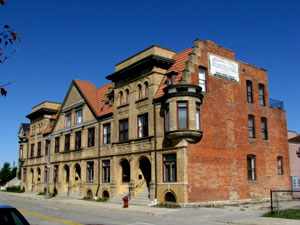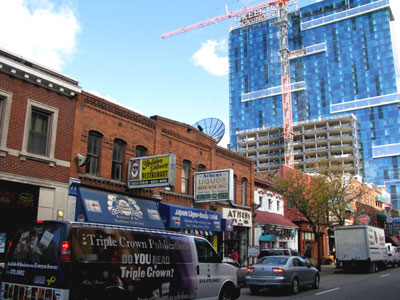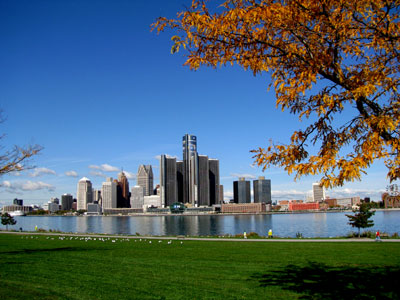My abode for my last two days in Detroit was the Inn on Ferry Street, a beautifully renovated complex of six historic buildings in the Midtown area of Detroit. It encompasses four mansions as well as two carriage houses that were each built for prominent Detroit families. After many years of languishing, these buildings have been re-functioned into 42 stunning guest rooms.

The Detroit Institute of Art
The East Ferry Avenue Historic District is a historic area in Midtown Detroit, which is also referred to as Detroit’s Cultural Centre. Well-preserved elegant mansions from the 1880s and 1890s line the streets and recall an era when these villas were owned by some of Detroit’s wealthiest citizens. This historic district represents one of the largest and least altered collections of Detroit’s leading architects of the late nineteenth century.

Some of the houses that are part of the Inn on Ferry Street
Midtown, the surrounding area, is also referred to as the “Cultural Center Historic District” because of its large concentration of museums, including the Detroit Institute of Arts, the Museum of African American History, the Detroit Historical Museum, the Main Branch of the Detroit Public Library, the Detroit Science Centre and the Museum of Contemporary Art Detroit. Wayne State University is located nearby, and a multitude of restaurants, galleries and nightlife venues make this area a popular destination.

Sue Mosey, a key player in the revitalization of Midtown Detroit
I had a chance to sit down with Sue Mosey, the driving force behind the renovation of the six buildings that make up the Inn on Ferry Street. Sue is an urban planner and the President of the University Cultural Center Association, a non-profit organization that has aided in planning and developing nearly $400 million in new residential projects in Detroit’s Midtown area.

The historic Charles Lang-Freer House on Ferry Street
Sue Mosey is one of Detroit’s most visionary and influential citizens. With more than 20 years of experience as an urban planner, Sue has dedicated her entire career to non-profit organizations that improve her city. She is the president of the University Cultural Center Association, a nonprofit community development group which promotes the revitalization and development of Detroit’s Midtown area. Detroit’s lack of strong city planners and developers has created a space for non-profit organizations and independent professionals who have been working hard to improve the city.

Two more houses that are part of the Inn on Ferry Street
Under Sue Mosey’s leadership the Midtown area has attracted more than $400 million in new residential investments; roughly 2800 housing units have been created or are being planned. Projects include planning support, real estate development, attraction of retailers and businesses, beautification and public safety improvement programs, the organization of local festivals and events and much more. Most recently Sue is working on getting a two-mile greenway off the ground to provide Midtown residents with safe recreational opportunities for walking, jogging and cycling. One of her main goals is to attract more people and businesses to the Midtown area.

A friendly face at the reception of the Inn on Ferry Street
To provide context for Sue Mosey’s endeavours it is important to understand a bit of Detroit’s history. During the late 1800s and early 1900s Detroit was often referred to as “the Paris of the West” because of its stunning architecture and Gilded Age mansions. From the first half of the 19th century onwards Detroit had become a centre of shipping, shipbuilding and manufacturing, resulting in rapid economic growth and considerable wealth among the city’s business leaders.

The Business Centre
Around the turn of the last century Detroit became a powerhouse in automotive manufacturing: the Ford Motor Company was founded in 1904 and other automotive pioneers built extensive factories in Detroit. The success of Ford’s Model T made car ownership accessible to the masses and created a large demand for automobiles. Thousands of African-American former plantation workers migrated north to participate in the manufacturing boom and the new prosperity offered to assembly line workers.

Peach bedroom at the Inn on Ferry Street
The economic slowdown following the end of World War I and, from 1929 onwards, the Great Depression put a damper on these economic aspirations. As jobs dwindled, old racial prejudices resurfaced and race relations became severely strained during the 1920s. The 1930s were a period of bitter labour strife in Detroit.
During the 1940s the world’s first sunken expressway was constructed in Detroit, and World War II sparked demand for weapons and spurred industrial growth. Changing demographics and long-entrenched racism led to racial tensions between Detroit’s African-American and White populations which escalated into a full-scale riot in 1943 during which 34 people were killed and 600 injured.

One of the many sitting rooms at the Inn on Ferry Street




